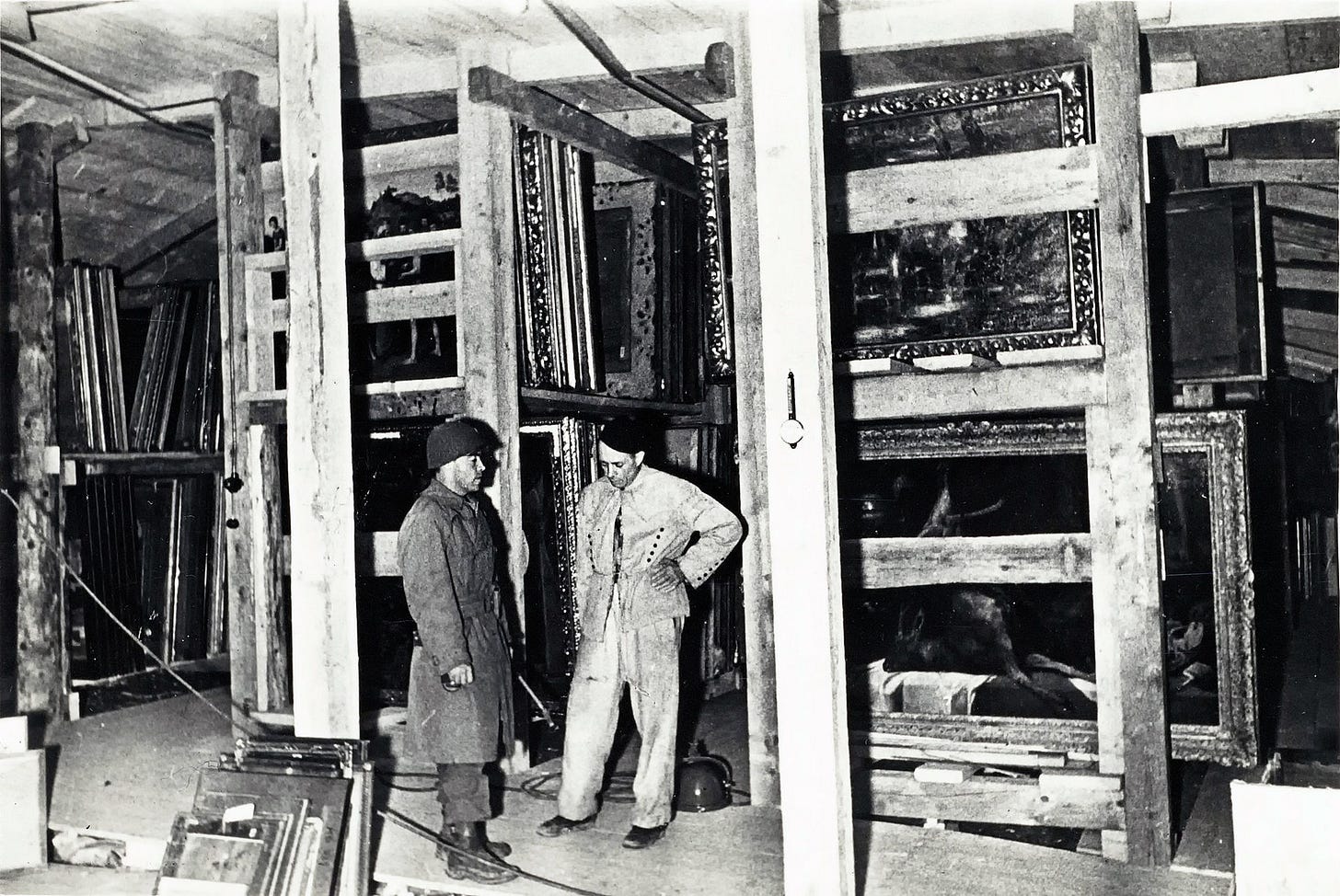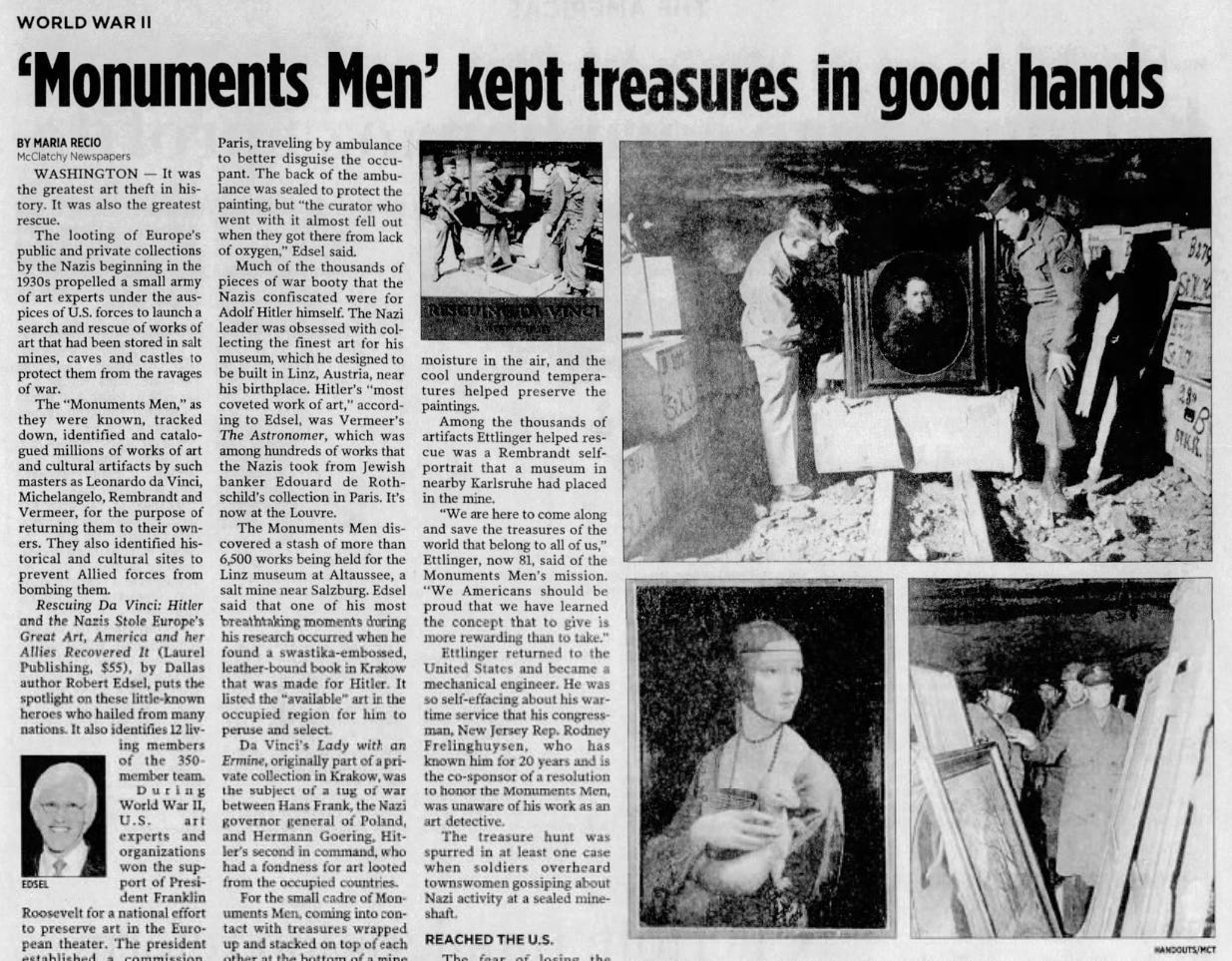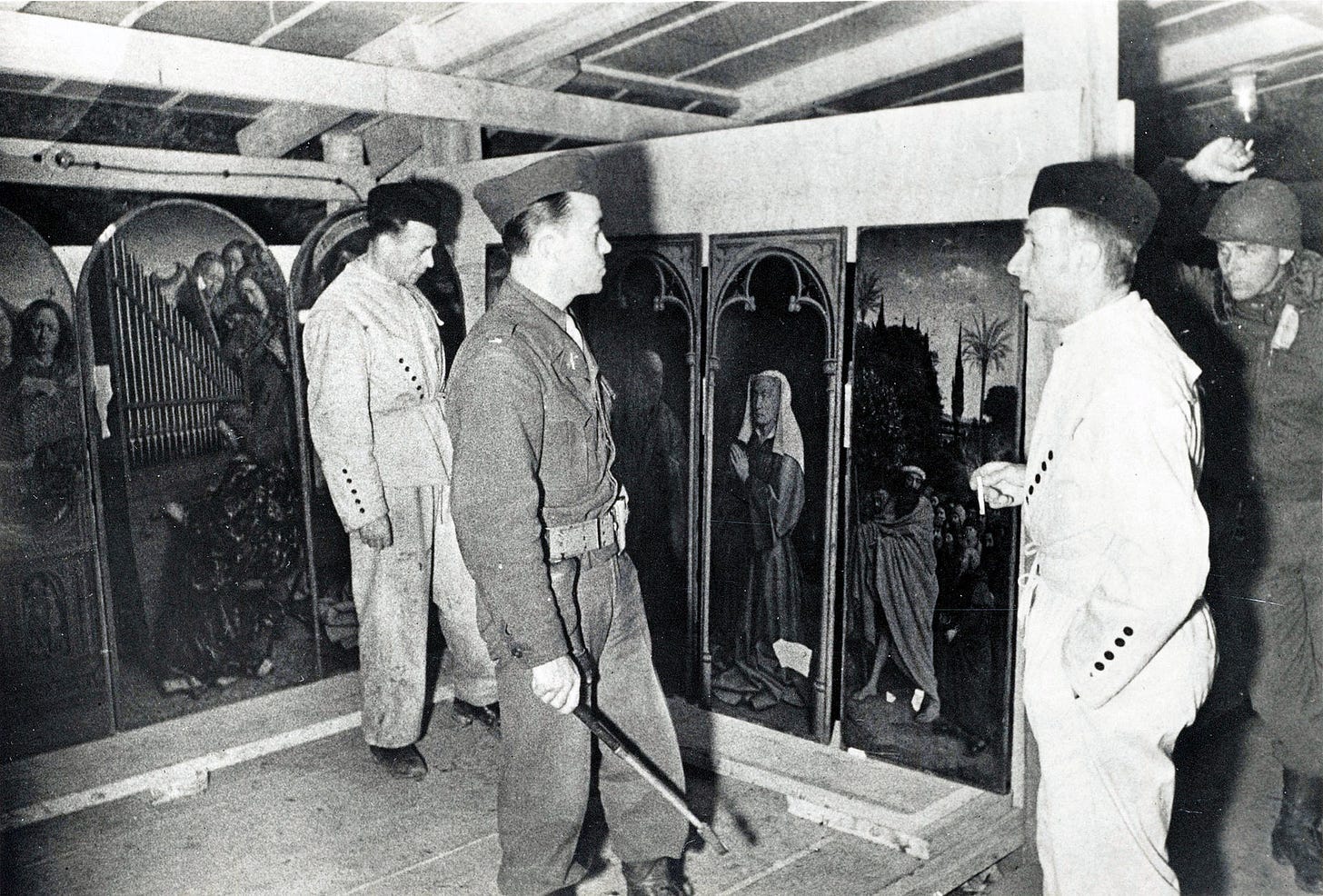Treasure Hunt: A Look at the Monuments Men and the Hunt for Stolen Nazi Art
Often overlooked due to the incredible scale of human suffering caused by the Second World War, the plundering of art and historical artifacts by the Nazis had widespread cultural impact
Background
The late 1920s stock market crash that plunged America into the Great Depression also had devastating effects worldwide. Germany, a nation already struggling in the aftermath of the First World War, saw a substantial economic downturn.
During this time of instability and unrest, Adolf Hitler and the Nazi party seized their opportunity to amass influence and support. Through carefully-targeted propaganda campaigns, the Nazis rapidly gained power in Germany, culminating in Hitler’s appointment as Chancellor in 1933.
Hitler had positioned himself to wield nearly limitless power. Through the use of propaganda, he had spread his hatred of Jewish people and any others considered “inferior” by his standards.
Many in Germany began to view Jews as the source of their problems, and Hitler wasted no time in beginning what would become the largest genocide in human history. A mere few months after Hitler’s appointment as Chancellor, the first concentration camps had already opened.
The Einsatzstab Reichsleiter Rosenberg
With completely unchecked power, Hitler and his higher-ups were free to do as they pleased. Being a failed artist himself, Hitler took a special interest in using his newfound status to expand his private art collection.
Hitler founded the Einsatzstab Reichsleiter Rosenberg, or ERR, in 1940. This special task force was dedicated to finding original artworks, cultural valuables, and anything else Hitler wanted. Once the ERR had located items of value, they confiscated them from their rightful owners and brought them back to Germany for Hitler’s personal collection.
The ERR was relentless in its looting efforts. Castles in Germany and salt mines in Austria alike were raided. Even elite wealthy families, such as the Rothschild family, were not spared.
In any Nazi-occupied region, the ERR swept homes, museums, and private collections. According to catalogs maintained by the ERR, in just four years, they stole over 10,000 paintings, 580 sculptures, 2,400 pieces of furniture, and 5,800 decorative pieces and collectibles.
All of the items taken effectively became the personal property of Hitler, who was free to pick and choose from the collection.
The Monuments Men
To combat this ongoing war on art and culture, the Allies established the Monuments, Fine Arts, and Archives section, more commonly known as the Monuments Men. This group was made up of art historians, museum directors, and curators, all working together for the sole purpose of stopping the widespread Nazi destruction of art, culture, and history.
The Monuments Men fought to protect cultural sites from being pillaged by the Nazis or destroyed during the war. This group also worked tirelessly to locate stolen art and reunite it with the rightful owners, a monumental effort that continues to this day.
Unfortunately, many pieces taken by the Nazis found their way into museums and private collections, while others, including works by Vincent van Gogh and other famous artists, remain unaccounted for.
In their investigation of Nazi looting and pillaging, the Monuments Men uncovered stashes of stolen artwork and massive quantities of gold. The catalogs prepared by the ERR were used as evidence in the Nuremberg trials after the war to demonstrate the massive cultural damage perpetuated by the Nazi regime.
Though the Allies and Monument Men did what they could, the sheer scale of the plundering was overwhelming.
Ongoing Recovery Efforts
Even as we approach the 80th anniversary of the end of World War II, efforts to recover and return stolen artwork are far from finished. Today, any pieces traced back to their original owners are being reunited with descendants of the rightful owners. The Nazi regime’s systematic pillaging of art and culture has created a ripple effect that has forever stained the history of art.

In 1980, two garage sale shoppers stumbled upon a shocking discovery. While attending a random garage sale in rural Texas, they found pieces of Nazi memorabilia alongside two jewel-encrusted manuscripts.
As it turns out, these manuscripts date back to the Middle Ages, and they are worth some $200 million today. These were just two of thousands of items stolen by the Nazis, with many of those pieces still missing.
In 2024, a museum in Switzerland pulled five pieces from display. These included pieces by renowned artists such as van Goh and Monet.
After further investigation, the museum has reason to believe that these pieces may have been stolen during the Nazi’s time in power. Until art historians and museum curators can verify the source of these pieces, they will not be displayed out of respect for the individuals and families victimized by the Nazi regime.
Sources:
Burnett, Simon. “Art Thefts: How a 200-Million-Dollar Collection of German Mediaeval Relics Turned up in a Texas...” Medium, Square Peg Pub, 20 Dec. 2024, medium.com/square-peg-pub/art-thefts-how-a-200-million-dollar-collection-of-german-mediaeval-relics-turned-up-in-a-texas-e8970e7d1c4a.
“Stolen World War II Art - Josh Shaffer - Google Arts & Culture.” Google, Google, artsandculture.google.com/usergallery/OQKCByqsin4_Jg. Accessed 25 Dec. 2024.
“World War II Looted Art: Turning History into Justice - Google Arts & Culture.” Google, Google, artsandculture.google.com/story/world-war-ii-looted-art-turning-history-into-justice-u-s-national-archives/PQXxtIcpKuJmJw?hl=en. Accessed 25 Dec. 2024.











